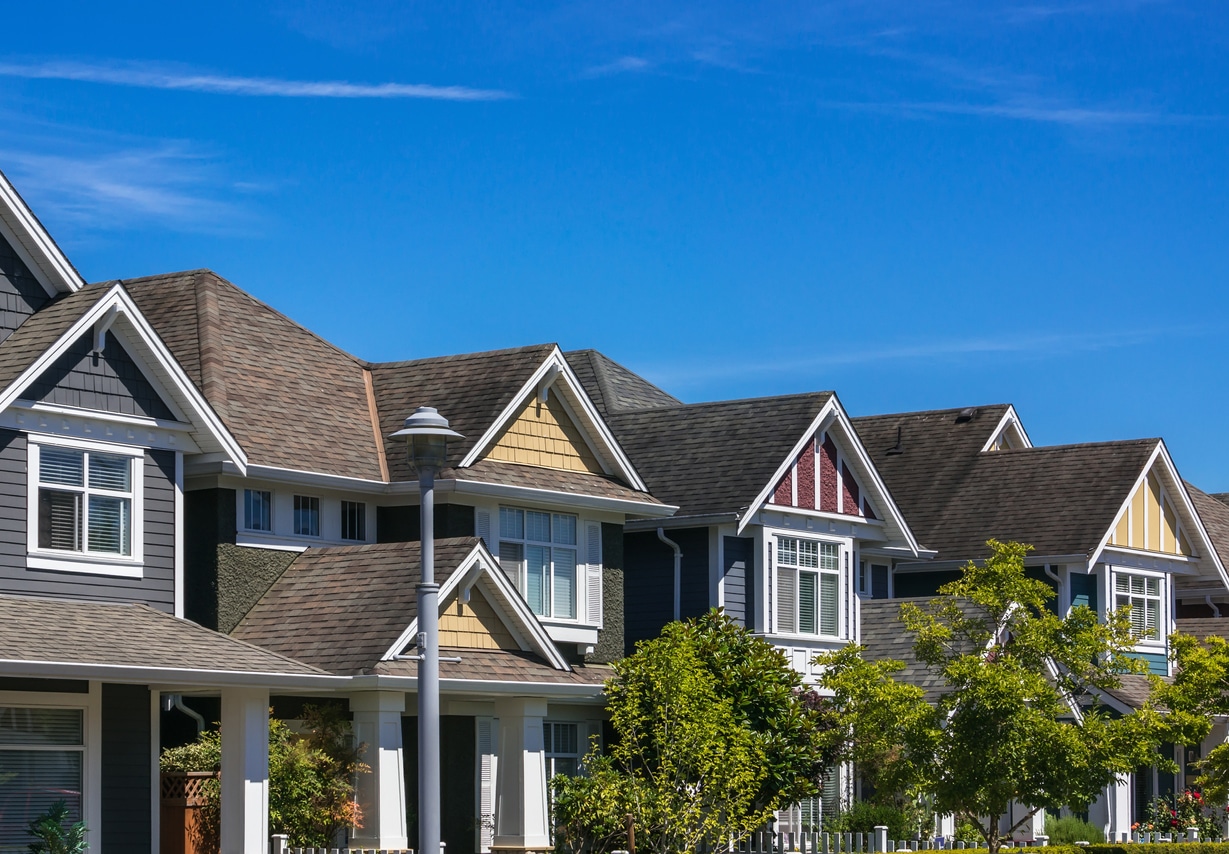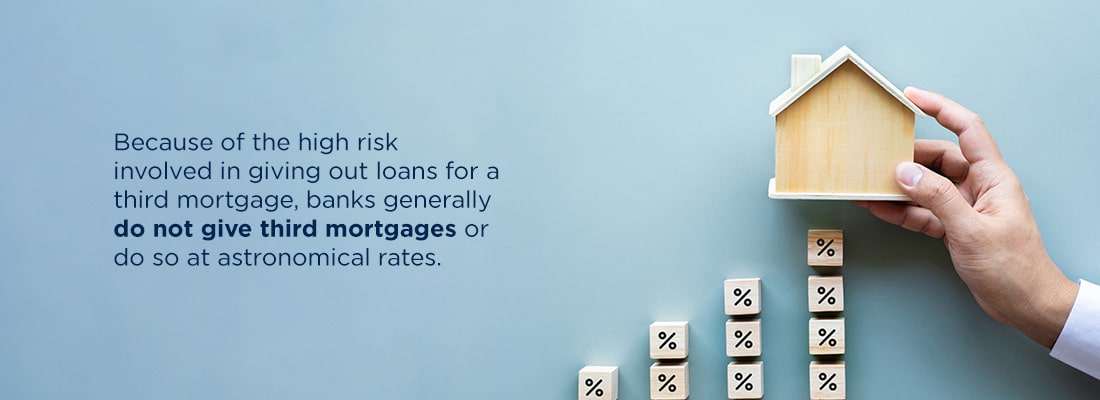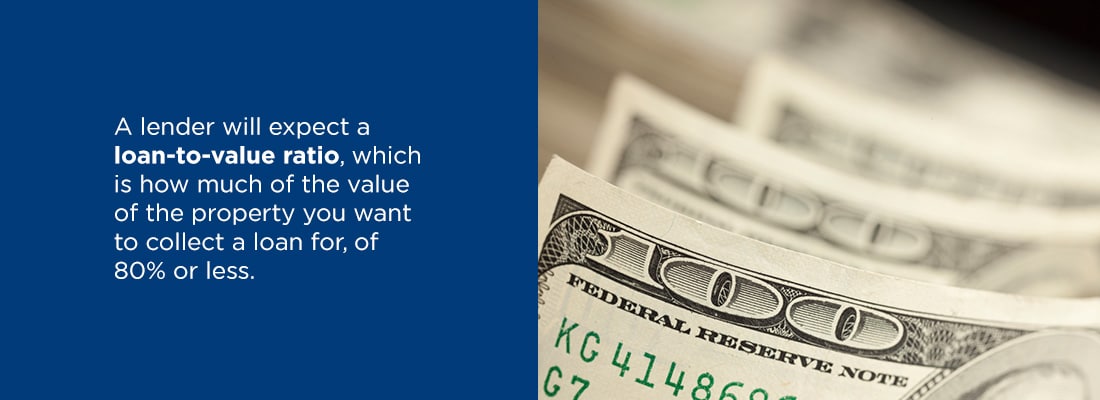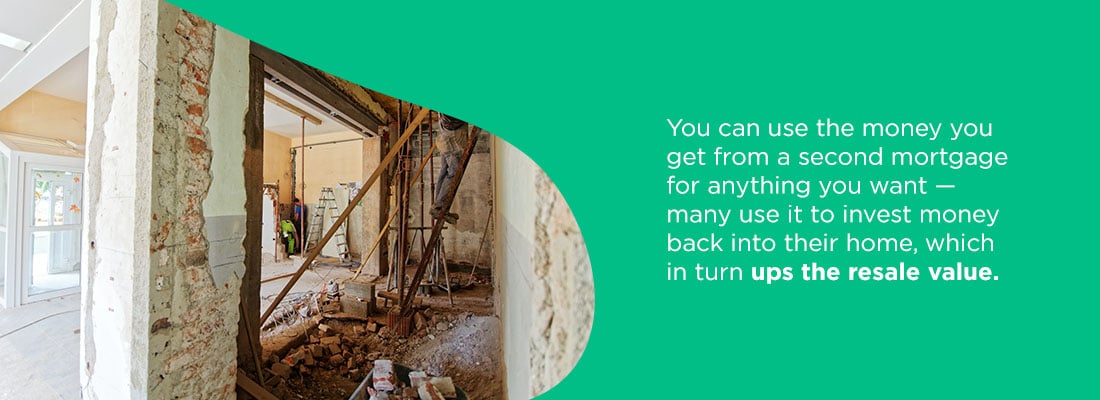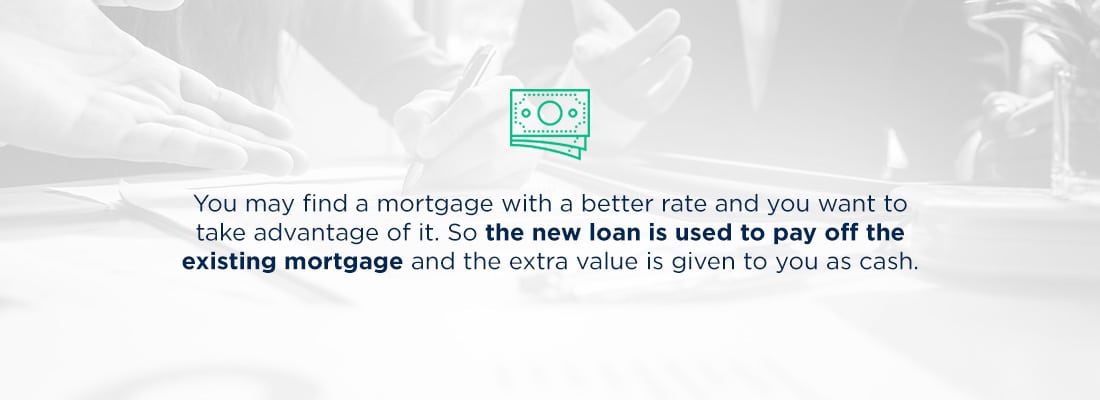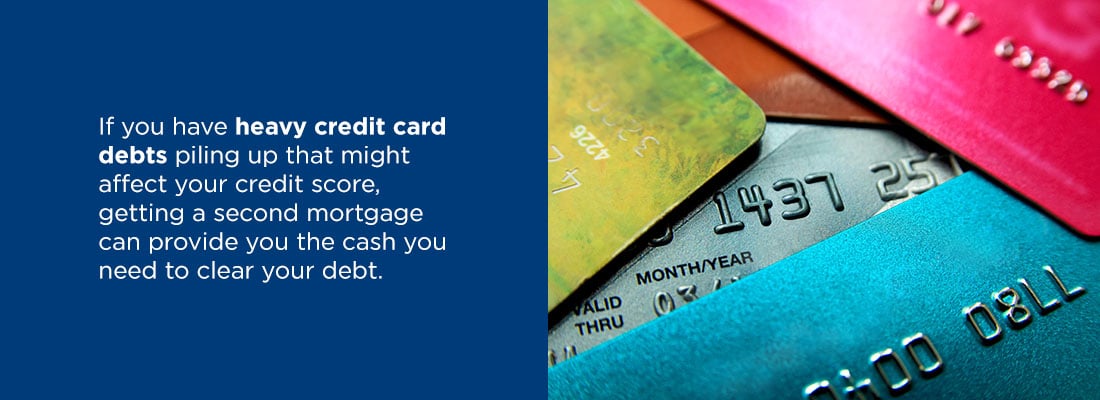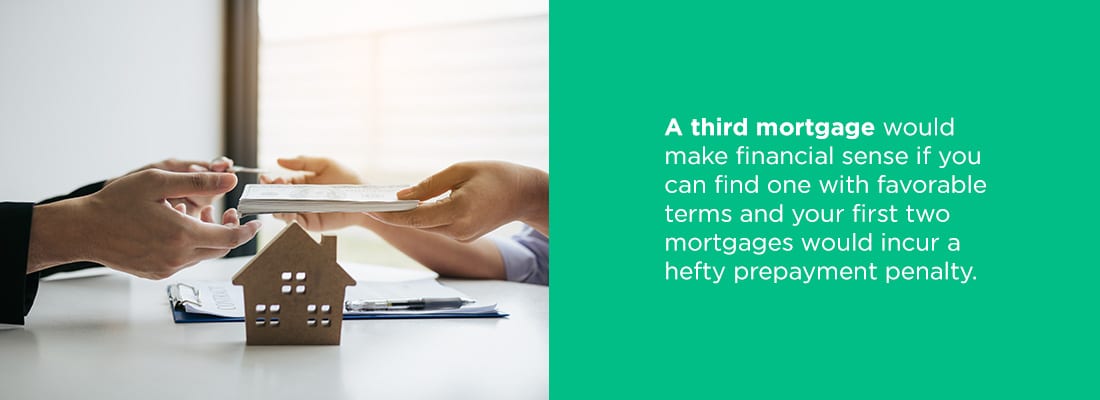Wondering how many mortgages you can realistically get on a single residential property? Whether you want to finance your first home or you already have an existing mortgage and you’re looking for ways to refinance your home, you might be wondering about the number of mortgages you can take out on one property.
In this article, find out everything you need to know about mortgages and how different mortgages interact with one another. Also, learn how to get multiple mortgages on one property and the pros and cons of having more than one mortgage on the same property. In addition, we share tips to help you decide if getting more than one mortgage is a good move for you.
Furthermore, we’ll also explain how to qualify for multiple mortgages and offer alternative home financing options you can take advantage of instead of getting multiple mortgages on your home.
How Many Mortgages Can I Get at the Same Time?
How many mortgages can you have on one property at the same time? Generally, you can get a maximum of two simultaneous mortgages on a single property. You will have a first mortgage — called the first-position mortgage — and you can get a second mortgage — called the second-position mortgage.
But how do multiple mortgages work, and what do these positions mean?
How Do Mortgages Work?
Mortgages on your home are usually considered individual loans and analyzed in terms of positions. The position — called lien position — of each mortgage is the order of priority with which the law will recognize the lenders’ claims against property in foreclosure.
A lien refers to the lender’s right to seize and possess a property when a borrower defaults on their repayment. The lien position of a mortgage determines its priority as well as when it gets paid in a foreclosure.
This means that in a foreclosure, after selling the house, the first-position mortgage gets paid first. Then the remaining money is used to pay the second-position mortgage. Third-position mortgages are rare. But why is it that you can’t generally get more than two mortgages on your home?
Why You Can’t Get More Than Two Mortgages
Finding a bank that is willing to take the third lien position for a residential home is difficult, if not impossible. And even if a bank or lender decides to give you a loan for a third mortgage, the rates may be astronomical — for good reasons — so you may not be able to meet the demands.
The reason is that third-position mortgages get paid last in foreclosures and may sometimes not get paid at all. Banks may not be willing to take up this kind of risk.
For example, in the great financial crisis of 2008 and 2009, there was a 120% increase in foreclosures from the previous years, and many second-position lenders didn’t get paid in foreclosures. That’s not to speak of the third position mortgages. Because of the high risk involved in giving out loans for a third mortgage, banks generally do not give third mortgages or do so at astronomical rates.
The bottom line? For a residential home, you’re open to just two mortgages.
However, getting a second mortgage on your home also comes with its challenges and disadvantages. If after taking a second mortgage you want to access more equity out of your home to fund other projects or pay an outstanding bill, there are other options that you can take in the absence of a third mortgage.
The next sections get you up to speed on how first and second mortgages work, how they interact with each other and the different types of second mortgages.
How a First Mortgage Works
As a first-time homeowner, whether you’re getting your home loan through a conventional lender, or a government-backed loan such as the Federal Housing Administration (FHA) loan, the U.S. Department of Veteran Affairs (VA) loan or the U.S. Department of Agriculture (USDA) loan, your lender provides you the money to purchase your house when you meet certain criteria.
While the criteria may vary for different lenders, you should generally expect to meet:
- A minimum credit score
- A good history of loan repayment
- A specific downpayment
- A specific loan-to-value (LTV) ratio
- A stipulated interest rate
- A repayment plan
The minimum credit score requirement varies depending on whether you’re going with a conventional loan or an FHA, VA or USDA loan. Also, a lender will expect a loan-to-value ratio, which is how much of the value of the property you want to collect a loan for, of 80% or less.
For example, to purchase a property worth $100, 000, at an LTV of 80%, the lender gives you $80,000 to purchase the property while you provide the remaining $20,000 as a downpayment.
This first mortgage will be your first position mortgage, which you repay — with added interest — on a monthly installment plan for a specified period of time. For every monthly payment that you make to pay off the principal of the loan, your share of the house — the equity — increases. Once you pay off the entire loan, the property is completely yours.
When you build up enough equity, you can use that to get a second mortgage on your property.
What Is a Second Mortgage and How Does It Work?
You may get a second mortgage from the same lender or a different lender. Whether you get a second mortgage from the lender of your first mortgage or from a different lender, the loan from a second mortgage does not have any use restriction.
You can use the money you get from a second mortgage for anything you want — many use it to invest money back into their home in the form of necessary repairs or aesthetic upgrades, which in turn ups the resale value. You can convert the home equity from your monthly mortgage payment to pay off a heavy credit card debt, fix damages in your house, pay off school loans or other heavy financial projects.
When you take the second mortgage on your property, the lender takes a lien against a portion of your home equity. The lender then gives you a loan equivalent to the value of the equity that you mortgaged.
The requirements for getting a second loan vary for different lenders. Generally, a second mortgage lender would only give you a loan for a portion of your equity on your property. This practice is to ensure you retain a level of ownership on the property — usually at least 20% equity on your property.
Also, the lender may require a debt-to-income (DTI) ratio — the portion of your gross income that you use for paying off debts and loans — of 43% or less. Other conditions like credit score and interest rates depend on the lender.
Here’s the interesting part. Apart from paying off your first mortgage, your home equity can increase if the value of your home increases. For example, when you make major repairs on your property, the value of the property increases. The increase is added to your equity that you can use to get any one of the two types of second mortgages.
Types of Second Mortgages
For a second mortgage on your home, you can either get a home equity loan or a home equity line of credit (HELOC).
What Is a Home Equity Loan?
A home equity loan is cash equivalent to the portion of your home equity you want to mortgage. The loan is given to you as a lump of cash to spend for whatever you want.
For example, after getting 50% equity on a $100,000 property, you can get a home equity loan for 60% of your equity. This will be equal to $30,000 given to you in cash.
The home equity loan becomes a second-position loan. And alongside your first-position loan, you have to make monthly payments for a specific period of time to pay off the principal and an added interest.
What Is a Home Equity Line of Credit Loan?
A HELOC is just like a credit card. Instead of the lump of cash — given to you in a home equity loan — you get a line of credit equivalent to the portion of your equity you want to mortgage.
To access your HELOC loan, you may receive a credit card or special checks. An interesting thing to note is a HELOC loan is a revolving loan. This means whenever you pay off the balance on the loan, you have access to the full line of credit again.
For example, if you take a HELOC for 60% of your 50% home equity in a $100,000 property, you’d get a $30,000 line of credit. If at any point you spend $10,000 out of the line of credit and pay it back within the time period, you can access the full $30,000 again. And because HELOC loans are not a lump of cash given to you, you don’t have to make regular monthly payments until you start utilizing the line of credit.
However, you can only make use of the line of credit during a specified period of time called the draw period. After the draw period, you can not access the line of credit anymore and you have to repay the loan balance in full. If you fail to repay the balance after the draw period, the lender has the right to seize your home.
It’s easy to mistake a second mortgage with a home refinance, but they are not the same.
How a Home Refinancing Works
A home refinance is when you get another loan — usually a larger loan — to pay off an existing mortgage.
You can get a home refinancing for various reasons. For example, you may find a mortgage with a better rate and you want to take advantage of it. So the new loan is used to pay off the existing mortgage and the extra value is given to you as cash. This loan is sometimes called a cash-out refinance.
Home refinancing can be a great way to switch lenders and get extra cash to use to offset other bills. Unlike car loans or school loans, the extra cash from a home refinancing can be used for anything, from funding your wedding to paying high-interest credit cards debts, school loans or funding your next project.
The Difference Between a Second Mortgage and a Home Refinance
Second mortgages and home refinances differ in two major ways. A second mortgage can be from the same or different lender, and you generally end up paying up two mortgages every month. The two mortgages have liens on your property and defaulting on one of them can lead to a foreclosure.
On the other hand, a home refinance doesn’t lead to having two separate liens on your home or paying two separate mortgages every month.
In a home refinance, you pay off a mortgage with another mortgage. You replace your original mortgage with a new mortgage that takes the first-lien position. For example, if your first loan balance is $50,000 and you find another lender with a better interest rate, you can get a $60,000 home refinance to pay off your existing mortgage balance and extra cash to put into other projects. The new loan becomes the first position loan.
Because of the conditions around getting a second loan, it may not be for everyone. How can you decide if going for a second mortgage is a good choice for you and your financial goals?
[download_section]
Is a Second Mortgage Right for You?
Getting a second mortgage has its pros and cons, but how can you tell if it’s a good move for you to get a second mortgage on your home? Consider these four questions to help you decide.
1. Do You Have a Steady Source of Income?
If you have a steady source of income and you know you can pay for two mortgages every month on time without defaulting, then getting a second mortgage might be a good move for you.
It is crucial to be sure you can comfortably pay off both mortgages to ensure you don’t lose your home. If, for example, you’re living from paycheck to paycheck, getting a second mortgage may not be the best move for you.
2. Do You Have Heavy Credit Card Debts?
If you have heavy credit card debts piling up that might affect your credit score and your ability to access credits in the future, getting a second mortgage on your property can provide you the cash you need to clear your debt and other bills and give you a strong financial standing.
3. Do You Have Enough Equity on Your Property?
If you’ve gathered enough equity on your property, you can use it to access more loans or lines of credit to fund a project or pay off credit card debts instead of leaving it to lie fallow.
4. Is a Cash-Out Refinance Not Possible for You?
If you can’t get a cash-out refinance for your property and you need a loan, you can go for a second mortgage to get the funds that you need.
Pros of Getting a Second Mortgage
Here are four pros of getting a second mortgage on your home.
- Second mortgages often have better interest rates than credit cards: Second mortgage interest rates are usually less than credit card rates. So getting a second mortgage to pay your credit card debts can help build your credit score as well as provide you with a less demanding loan.
- You can use loans from second mortgages for anything: Unlike school loans, business loans or car loans, there’s no restriction to what you can use the loans from a second mortgage for. Compared to your first mortgage and other forms of restricted loans, this is a lot of freedom.
- You can access high loans with second mortgages: You can access high loan amounts at good rates with a second mortgage. For example, based on your lender and how well you meet other lending requirements, you can use as much as 90% of your home equity for your second mortgage.
- Getting a second mortgage help you make better use of your home equity: Instead of tying down money in your property, you can use the equity you’ve gathered over the years in your home to access loans that you can use for paying off credit card debts, other loans or funding your personal projects.
Cons of Getting a Second Mortgage
Second mortgages come with their own set of challenges. Here are four cons of getting a second mortgage for your home:
- Second mortgages usually have higher interest rates than refinancing: Because second mortgages take the second lien position in a foreclosure, lenders are taking a lot of risk in giving you a loan for the second place in your line of mortgages. So to compensate for that, they may demand higher interest rates than the first mortgage or a refinance.
- Second mortgages are financial disturbances: Especially if you’re already struggling with the first mortgage, adding another mortgage can put lots of pressure on your finance, bite deep into your budget and possibly lead to defaulting in your primary mortgage or both.
- Second mortgages can take you back: Especially if you’re close to paying off your current mortgage, a second mortgage might pull you right back into the debt track and put your home at stake if you default on your monthly payment.
- Second mortgages can be money traps: Because of the freedom of use of the loans from second mortgages, it is possible for you to spend it on projects that put you in more debt.
When Is a Third Mortgage a Good Idea?
If you are able to find a lender that will offer you a third mortgage on your home, you likely fit a very specific set of criteria:
- Your first and second mortgages have low principal balances.
- You have sufficient equity on your home.
- You have good credit and repayment history.
A third mortgage would make financial sense if you can find one with favorable terms and your first two mortgages would incur a hefty prepayment penalty. However, since you can consolidate loans, third mortgages are extremely rare.
Putting Everything Together
You can get at most two mortgages at the same time for your home in most cases. Depending on the lender you work with, the interest rates and requirements may vary.
Also, instead of a second mortgage, you can go for a home refinancing to access more loans without taking on more mortgages on your property.
Contact Assurance Financial for Your Home Loan
Whether you are a first-time homebuyer, or you’re looking for a second mortgage or home refinancing loan, Assurance Financial can help you get the home financing and mortgage to meet your needs.
Our in-house loan officers will work with you to underwrite your loan. We’re an independent residential mortgage banker, which means we can underwrite your loan in-house and don’t have to outsource to another banker.
We provide end-to-end in-house processing of your loan and application technology that makes getting your loan fast and simple, no matter the type of loan.
You can start by applying online with Abby or contact us to speak with a live agent.
Linked sources:

